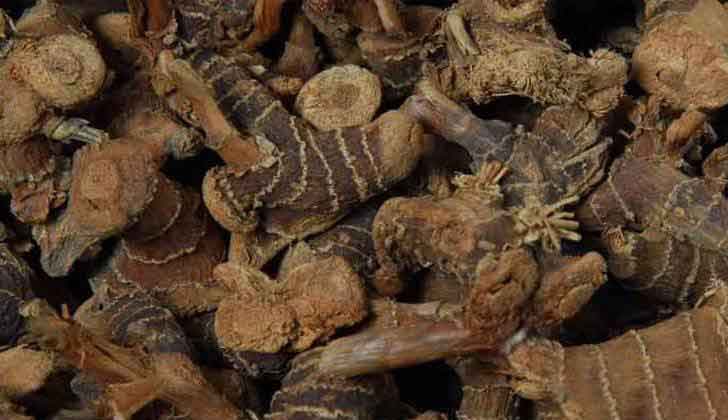Wondering what galangal is good for? Well, let’s start! What are the benefits of galangal: Think of a plant that looks like ginger and acts like turmeric, so can fight cancer and keep your brain healthy. This is the name of the miracle: galangal!
This root plant, which is part of the ginger family, grows in various parts of Asia and is a basic plant in Thai food.
The best thing about galangal is that fights breaker to keep your body healthy. It has been found that has a significant positive effect on eight different types of cancer and also reduces symptoms of chronic and specific inflammation due to drug and is generally better at doing so.
Let’s take a trip to explore this plant and find out exactly how it can help your health.

What is Galangal?
Galangal is referred to as ginger, as in most of Asian recipes, because they have significantly similar flavors.
This root spice has begun to grow in China and Thailand and extends to common Ayurvedic medicine. In addition to spicy structure, many people define flavor at the same time as soil and citrus.
However, galangal as in most spicy foods, capsaicin gives this taste. Instead of leaving a very lasting burning sensation, a painful moment shines and goes immediately.
If you are consuming a Thai dish or tried once, you can recognize the taste of galangal root as a strange taste.
So, what is good for diseases? The answer to this question may seem strange to you because is very useful for everything.
1. A Potentially Revolutionary Cancer-Fighting Agent
The most striking health benefit of galangal is the ability to combat and potentially prevent a large number of cancers and tumors, according to a large continuous scientific research group. Let’s review the types of cancer affected by galangal.
2. Gastric Cancer
A study in Iran in 2014 found that galangal liquid extract significantly damaged the number of stomach cancer cells in a laboratory test 48 hours later.
3. Leukemia
To eliminate acute monocytic leukemia cells, known as leukemia, which started in bone marrow and tried to find a natural cancer treatment that would not harm adjacent cells such as dangerous chemotherapy, researchers tested galangal fluid essence.
The Jamaican researchers who conducted a study found that galangal could be a potential treatment for leukemia.
4. Melanoma
Researchers examined the effect of three compounds in galangal root on human melanoma (skin cancer) cells.
All three compounds had an “antiproliferative” effect, so it stopped the growth of new cancerous cells.

5. Pancreatic Cancer
A study published in 2017 tested multiple compounds in galangal and their effect on pancreatic cancer cells. As a result, new cells stopped growing and suppressed gene pathways responsible for the expanding effect of cancer.
6. Colon cancer
When galangal was first investigated against human colon cancer cells (in 2013), scientists found that two types of colon cancer caused apoptosis (cell death) in cells.
7. Breast Cancer
A research in 2014, a study found that galangal extract was apoptosis in human breast cancer cell line, but did not harm healthy breast cells.
Study at a medical university in China; to stimulate breast cancer cells that support cell death observed in the treatment of cancer.
8. Liver (Hepatitis) Cancer
It is a reason why cancer is so damaging to the human body or spread to other organs “large increase” is relevant. This is especially true for liver cancer.
In 2015, a Taiwan study investigating the effect of extracts from galangal on cancer cells (a kind of liver cancer) found that natural compounds reduced the incidence of metastasis by stopping cells from binding to other healthy cells.
9. Increases Sperm Count and Function
Some parts of the galangal root may be useful in treating male fertility. In a mouse experiment, researchers in Iran discovered that increased sperm count and mobility (or mobility).
In Denmark, a study looked at the effect of galangal root combined with pomegranate fruit extract on sperm in healthy men. Researchers found that several moving sperm increased three times more than others.
10. Acts as Anti-inflammatory Agent
Inflammation is at Root of Most Diseases: Cancer, heart disease, Alzheimer’s disease, and many fatal diseases are linked to the development of a large number of diseases. galangal root has an anti-inflammatory effect on and against specific conditions in the general body.
In the human body, tumor necrosis factor-alpha or TNF-alpha is known as a cytokine (cell signaling protein) that regulates immune response.
TNF-alpha may cause harmful damage if over-stimulated and may contribute to chronic inflammatory fatal diseases, this protein is a very research topic. A phytobein found in galangal suppresses TNF-alpha’s activity and therefore can help reduce inflammation in the body.
This herb can also help reduce inflammation associated with arthritis. In a 2001 study, subjects taking a compound containing galangal and ginger extract significantly reduced the need for drugs for knee pain.

11. Has Antibacterial and Antifungal Properties
Galangal; staff look, E. coli, listeria, salmonella, and clostridium have an antimicrobial effect on many bacteria infecting food. Especially amoxicillin E. can fight cold.
You can reduce the effect of a bacterium known as vibrio by cooking shellfish. Vibrio may be wrapped in shellfish, especially oysters but these effects are less likely after the addition of galangal.
About 66 percent of the world’s population is carried by another bacteria, H. It’s known as pylori. However, when this bacterium is exposed to galangal, mobility is reduced. In addition to galangal, H. pylori can even help prevent stomach ulcers caused by bacteria.
12. High Antioxidants
You know that eating blueberries helps increase your antioxidant intake, but did you know that galangal can do the same? However, antioxidant types are not the same as your favorite fruits.
13. Supports Brain Health
Depending partly on anti-inflammatory properties, this root-derived compound, known as ACA, may have a protective effect on the brain, possibly reducing some forms of age-related cognitive degeneration.
Returning to TNF-alpha protein was discovered that by regulating TNF-alpha, galangal could even fight depression.
14. Reduces Stomach Pain and Digestive Problems
The oldest and most sought-after effect is good for stomach upset. It is used in Ayurvedic medicine and other Asian cultures to calm the stomach, relieve diarrhea, reduce vomiting and stop hiccups.
